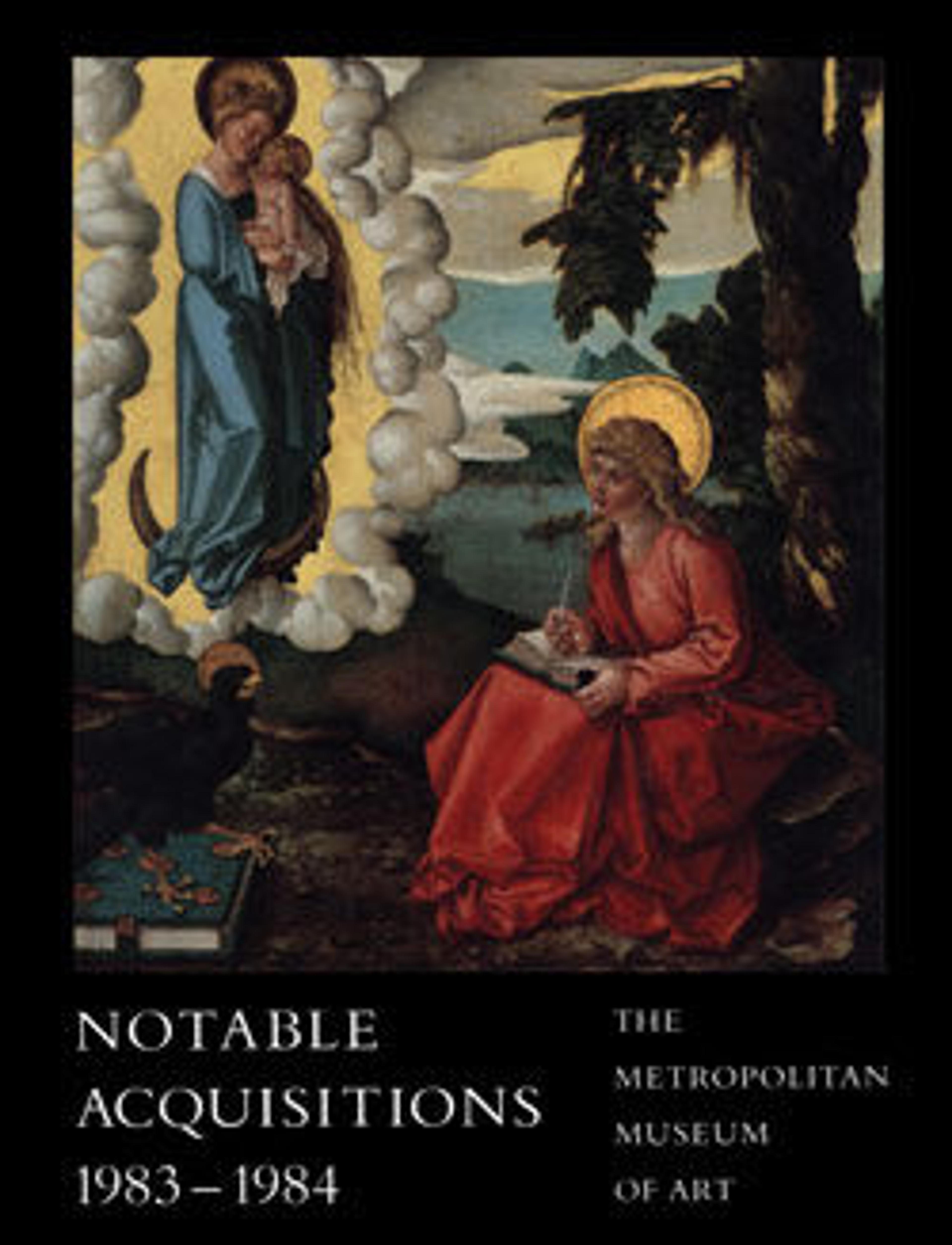Jar
During the course of the sixteenth century a number of potteries making tin-enameled earthenware came into existence in Talavera de la Reina, a small town some sixty miles southwest of Madrid. The town supplied plain wares that were greatly admired for the beauty of their white surface—the "bianco"—and others that were decorated in a subdued palette of high-temperature greens, yellows, browns, blues, and purples.
This jar and bowl (1983.469.1, .2) come from a pottery, so far unidentified by name, that seems to have obtained important orders over a fairly long period in the late sixteenth and the seventeenth centuries. The characteristics of the factory are well exemplified in these objects: a fine bianco; a very beautiful blue—skillfully modulated from light to deep shades—that predominated in the early and mid-16oos; and an energetic freedom in the use of the brush point to draw in figures and background vegetation. In the latter part of the seventeenth century the prevailing to
This jar and bowl (1983.469.1, .2) come from a pottery, so far unidentified by name, that seems to have obtained important orders over a fairly long period in the late sixteenth and the seventeenth centuries. The characteristics of the factory are well exemplified in these objects: a fine bianco; a very beautiful blue—skillfully modulated from light to deep shades—that predominated in the early and mid-16oos; and an energetic freedom in the use of the brush point to draw in figures and background vegetation. In the latter part of the seventeenth century the prevailing to
Artwork Details
- Title: Jar
- Date: ca. 1625–50
- Culture: Spanish, Talavera de la Reina
- Medium: Tin-glazed earthenware
- Dimensions: Overall (confirmed): 22 3/8 × 18 3/8 × 16 1/2 in. (56.8 × 46.7 × 41.9 cm)
- Classification: Ceramics-Pottery
- Credit Line: Purchase, Gift of Irwin Untermyer, by exchange, 1983
- Object Number: 1983.469.2
- Curatorial Department: European Sculpture and Decorative Arts
More Artwork
Research Resources
The Met provides unparalleled resources for research and welcomes an international community of students and scholars. The Met's Open Access API is where creators and researchers can connect to the The Met collection. Open Access data and public domain images are available for unrestricted commercial and noncommercial use without permission or fee.
To request images under copyright and other restrictions, please use this Image Request form.
Feedback
We continue to research and examine historical and cultural context for objects in The Met collection. If you have comments or questions about this object record, please complete and submit this form. The Museum looks forward to receiving your comments.
